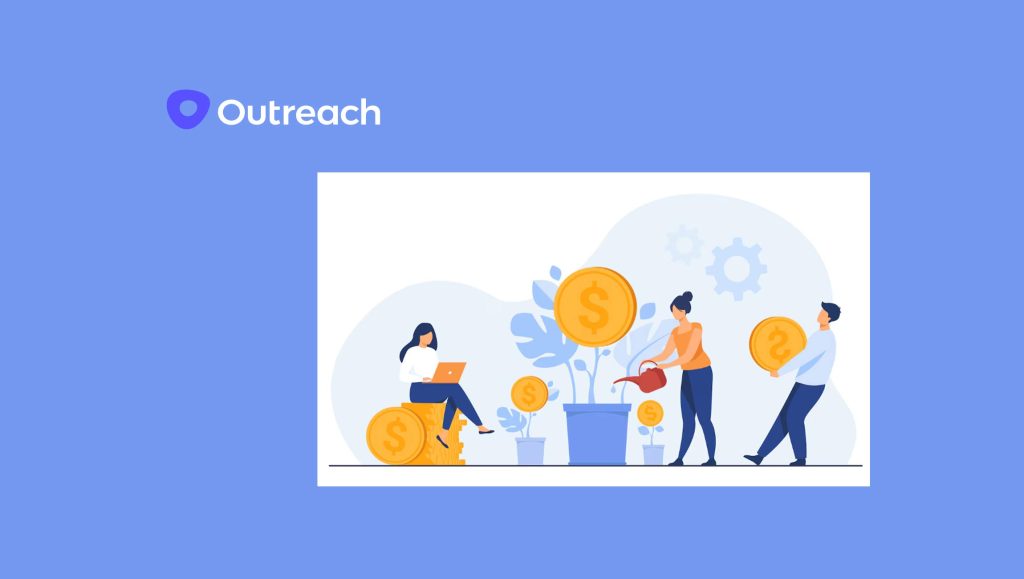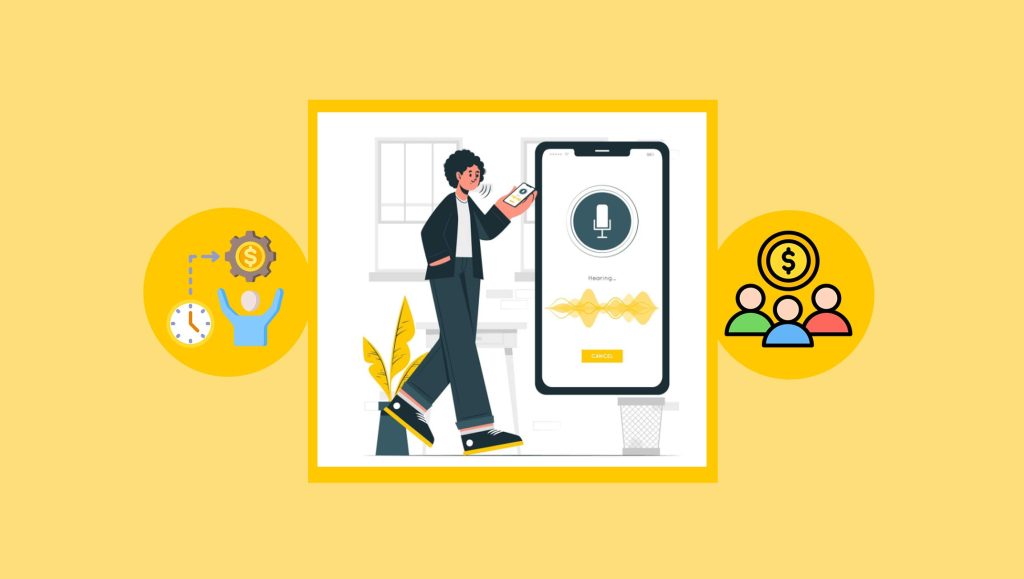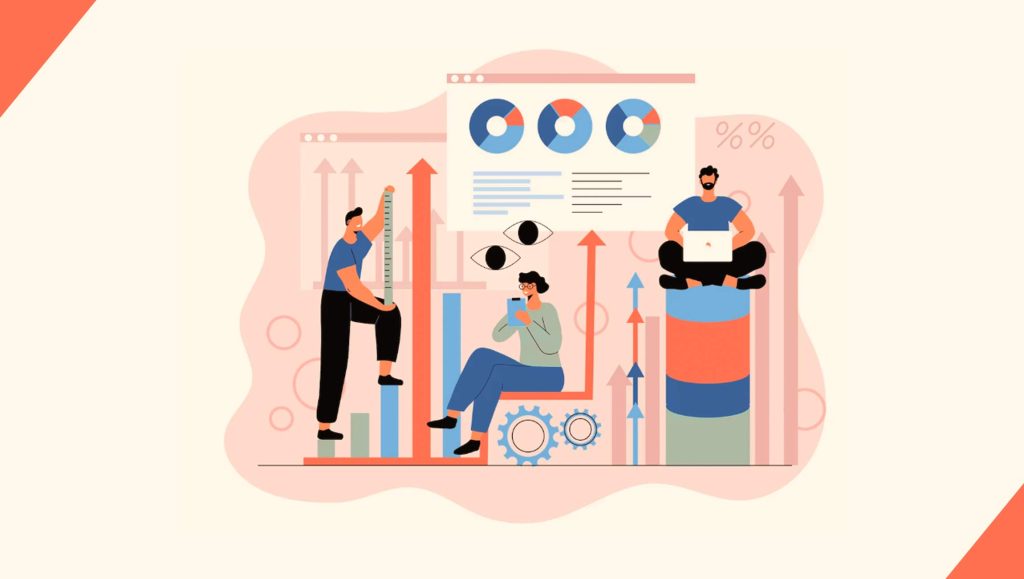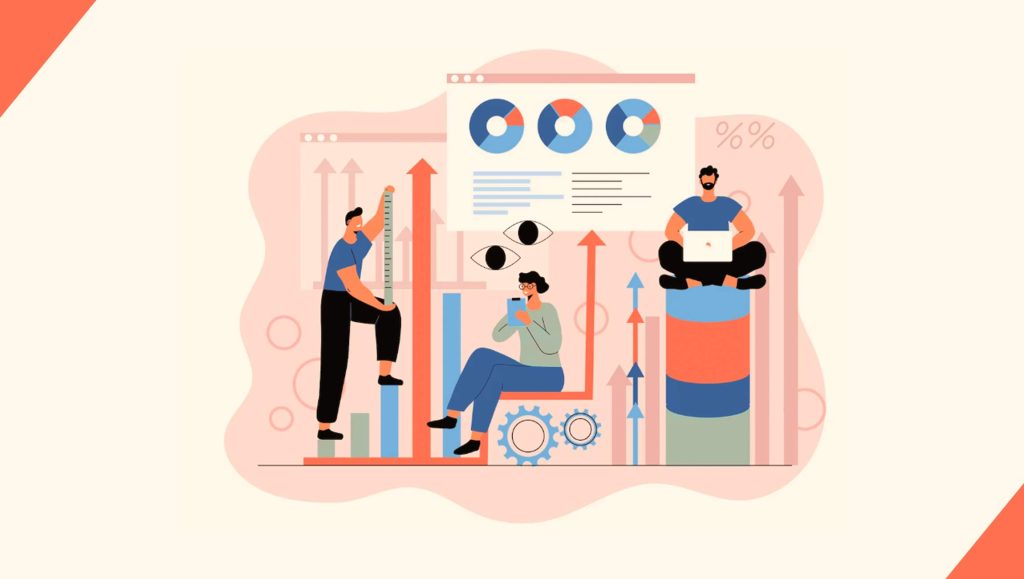Yuval Kesten, Chief Product Officer at HoneyBook chats about the impact of AI on customer facing processes and roles in this interview with SalesTechStar:
______
Hi Yuval, tell us more about Honeybook and its journey so far.
HoneyBook is the go-to business management platform for service-based small businesses—think event planners, marketing consultants, interior designers, and photographers. These independent entrepreneurs don’t sell products; they sell their time, creativity, and expertise. Our platform helps them run their businesses more efficiently and scale faster.
HoneyBook simplifies and streamlines operations by bringing every essential tool into one place, from integrated financial systems to customizable workflows. This allows business owners to focus less on admin and more on their craft and growth—ultimately helping many scale to seven-figure revenues.
We’ve embedded AI into the core of our platform to power the daily processes that matter most to our members. As a result, HoneyBook AI users have booked twice as many clients, reduced response times by 15%, and achieved a 94% increase in gross payment volume (GPV) compared to those not using AI. And we’re just getting started—we’re continuing to invest heavily in AI to unlock even more value for our members.
How are you seeing AI trends impact business processes especially in customer relationship management today?
We’re seeing AI reshape how service-based SMBs manage their client relationships—by taking on the manual, repetitive tasks that typically eat up a business owner’s time. In the context of customer relationship management, AI is helping automate everything from lead follow-up and email drafting to scheduling, invoicing, project and revenue tracking.
At HoneyBook, our mission has always been to empower independent businesses with tools that feel like an extension of themselves. AI allows us to take that a step further—offering intelligent suggestions, streamlining workflows, and personalizing communication in a way that feels both efficient and deeply human.
We recently debuted our updated AI strategy – a blend of conversational, generative, and agentic AI offerings tailored for the SMB market.
Single tools, like ChatGPT or its alternatives, are just the beginning – a baseline for AI adoption – but they are insufficient for meeting the complex needs of a small business.
Our approach eliminates friction by ensuring AI works across every aspect of an entrepreneur’s workflow, and we are especially seeing this impact business processes through four key principles:
- Blends into existing workflows: HoneyBook AI knows everything about your business, with no complicated setup or extra steps – it’s already built right into HoneyBook. It’s already trained on your data and keeps learning automatically, so the more you engage with customers and transact, the more intelligent your business operations become.
- Simplifies, not overwhelms – While other companies fragment AI into multiple assistants for different tasks, HoneyBook delivers a single, integrated partner that works across every aspect of their members’ business, eliminating the need to manage multiple AI tools.
- Empowers, not replaces – Entrepreneurs are at their best when they’re freed up to focus on their craft and clients. HoneyBook AI serves as a strategic advisor, efficiency architect, marketing consultant, and relationship coach—all within a single, intuitive interface.
- Built responsibly – By prioritizing transparency, control, privacy and security, we ensure that every feature is built to bring value to independent professionals and protect their business integrity.
A quick shout out to some global brands across industries who you’ve seen have deployed AI tools and AI agents effectively to scale processes and outcomes?
AI tools and agents have become central to sales and growth across industries—it’s no longer optional. Brands like Nike, Starbucks, Amazon, and Salesforce are leading the way by embedding AI into their marketing personalization, app experiences, and recommendation engines.
We’re also seeing the rise of agentic AI, which goes far beyond basic chatbots. These systems can now manage entire business workflows, freeing up founders and teams to focus on their craft instead of day-to-day operations or business development.
I’m especially excited about AI tools that help businesses navigate economic uncertainty—tools that can assess the impact of tariffs, track inflation, and even automate pricing strategies in real time. These applications don’t just improve efficiency; they empower smarter, more adaptive decision-making.
Read More: SalesTechStar Interview with Robb Robinson, SVP at OXIO
What about the future of AI and customer facing roles should industry enthusiasts be paying more attention to?
At HoneyBook, we’re conducting deep research into the future of AI in customer-facing roles by examining which Jobs To Be Done (JTBD) can be fully automated, which require more user control, and which are best facilitated through voice or text with a human or AI agent. We’re also exploring how various UI components—such as charts, knobs, and interactive canvases—can enhance each interaction. Our goal is to dynamically generate the ideal user interface for each task, tailored to the specific user and use case.
For business teams at the cusp of deploying new age AI to drive goals, what training and implementation practices matter most?
Each team in a company should be setting bold goals to dramatically improve productivity and unlock new capabilities with AI—aiming not for marginal gains but for 5x to 10x impact. That kind of transformation won’t happen by accident. It requires leadership to clearly define priorities, incentivize experimentation, and create space for teams to rethink how they work. Without that direction, most teams will default to the status quo and miss the opportunity.
Take the Finance team. If they’re still relying on complex, error-prone spreadsheets a year from now, it’s not just an execution gap—it’s a strategic failure. AI can automate reconciliations, surface anomalies, and generate forecasts far beyond what traditional tools offer. The goal shouldn’t be to tweak existing processes, but to leap ahead and redesign how financial insight is created and applied. That shift requires not only tools but a mandate and mindset to pursue transformative outcomes.
Using ChatGPT or similar tools is now the baseline. Real value comes from how creatively and deeply AI is embedded into everyday work. To get there, companies need more than access to tools—they need cultural readiness. That starts with building AI literacy across the org, investing in hands-on learning, and empowering early adopters as internal champions. The most effective training happens through real use: teams solving actual problems using AI, not just watching demos.
Ultimately, successful AI adoption comes down to clarity from leadership, courage to experiment, and a culture that embraces reinvention. Companies that get this right won’t just be more efficient—they’ll be fundamentally more capable and competitive.
Five of the biggest myths around AI, Sales, Marketing and Customer Relationship Management you’d like to bust before we wrap up?
- “You can’t scale solo.”
The biggest myth around AI is that you need a large team to operate and integrate AI tools. In reality, AI is enabling a new wave of “seven-figure businesses of one.” Across industries, solo entrepreneurs and lean teams are using AI to drive productivity, improve funnel conversion, generate leads, and even get strategic insights into what services to offer. AI is the ultimate force multiplier.
- “AI is taking jobs away from humans.”
Not now—and likely never. AI is taking over repetitive, time-consuming tasks, not replacing human creativity or problem-solving. For small businesses especially, AI can free up time for owners to focus on their craft and grow their teams in meaningful ways, rather than hiring just to keep up with admin work.
- “AI is perfect.”
Like any emerging technology, AI is still evolving. It’s powerful, but it’s not a magic wand. Learning how to use it effectively—and understanding its limits—is part of the process. Expect experimentation, not perfection.
- “It’s okay to wait and see before adopting AI at work.”
This mindset is a fast track to irrelevance. AI tools are becoming essential for growth—and survival. For service providers with a digital element (think content creators, designers, photographers), the difference is stark: either get supercharged by AI and boost both quality and speed, or get outpaced by competitors who do.
- “AI is too risky.” As with any powerful tool, there are risks—but they can be managed. Staying ahead of threats and ensuring ethical use requires collaboration across sales, legal, marketing, and leadership teams. Risk shouldn’t be a reason to stall; it should be a reason to approach AI adoption thoughtfully and strategically.
Read More: Smarter Sales Automation: Why AI Won’t Save You from Bad Leads & Skyrocketing CAC?

HoneyBook is a leading client relationship platform for independent businesses
Yuval Kesten, is Chief Product Officer at HoneyBook
Yuval Kesten, Chief Product Officer at HoneyBook chats about the impact of AI on customer facing processes and roles in this interview with SalesTechStar:
______
Hi Yuval, tell us more about Honeybook and its journey so far.
HoneyBook is the go-to business management platform for service-based small businesses—think event planners, marketing consultants, interior designers, and photographers. These independent entrepreneurs don’t sell products; they sell their time, creativity, and expertise. Our platform helps them run their businesses more efficiently and scale faster.
HoneyBook simplifies and streamlines operations by bringing every essential tool into one place, from integrated financial systems to customizable workflows. This allows business owners to focus less on admin and more on their craft and growth—ultimately helping many scale to seven-figure revenues.
We’ve embedded AI into the core of our platform to power the daily processes that matter most to our members. As a result, HoneyBook AI users have booked twice as many clients, reduced response times by 15%, and achieved a 94% increase in gross payment volume (GPV) compared to those not using AI. And we’re just getting started—we’re continuing to invest heavily in AI to unlock even more value for our members.
How are you seeing AI trends impact business processes especially in customer relationship management today?
We’re seeing AI reshape how service-based SMBs manage their client relationships—by taking on the manual, repetitive tasks that typically eat up a business owner’s time. In the context of customer relationship management, AI is helping automate everything from lead follow-up and email drafting to scheduling, invoicing, project and revenue tracking.
At HoneyBook, our mission has always been to empower independent businesses with tools that feel like an extension of themselves. AI allows us to take that a step further—offering intelligent suggestions, streamlining workflows, and personalizing communication in a way that feels both efficient and deeply human.
We recently debuted our updated AI strategy – a blend of conversational, generative, and agentic AI offerings tailored for the SMB market.
Single tools, like ChatGPT or its alternatives, are just the beginning – a baseline for AI adoption – but they are insufficient for meeting the complex needs of a small business.
Our approach eliminates friction by ensuring AI works across every aspect of an entrepreneur’s workflow, and we are especially seeing this impact business processes through four key principles:
- Blends into existing workflows: HoneyBook AI knows everything about your business, with no complicated setup or extra steps – it’s already built right into HoneyBook. It’s already trained on your data and keeps learning automatically, so the more you engage with customers and transact, the more intelligent your business operations become.
- Simplifies, not overwhelms – While other companies fragment AI into multiple assistants for different tasks, HoneyBook delivers a single, integrated partner that works across every aspect of their members’ business, eliminating the need to manage multiple AI tools.
- Empowers, not replaces – Entrepreneurs are at their best when they’re freed up to focus on their craft and clients. HoneyBook AI serves as a strategic advisor, efficiency architect, marketing consultant, and relationship coach—all within a single, intuitive interface.
- Built responsibly – By prioritizing transparency, control, privacy and security, we ensure that every feature is built to bring value to independent professionals and protect their business integrity.
A quick shout out to some global brands across industries who you’ve seen have deployed AI tools and AI agents effectively to scale processes and outcomes?
AI tools and agents have become central to sales and growth across industries—it’s no longer optional. Brands like Nike, Starbucks, Amazon, and Salesforce are leading the way by embedding AI into their marketing personalization, app experiences, and recommendation engines.
We’re also seeing the rise of agentic AI, which goes far beyond basic chatbots. These systems can now manage entire business workflows, freeing up founders and teams to focus on their craft instead of day-to-day operations or business development.
I’m especially excited about AI tools that help businesses navigate economic uncertainty—tools that can assess the impact of tariffs, track inflation, and even automate pricing strategies in real time. These applications don’t just improve efficiency; they empower smarter, more adaptive decision-making.
Read More: SalesTechStar Interview with Robb Robinson, SVP at OXIO
What about the future of AI and customer facing roles should industry enthusiasts be paying more attention to?
At HoneyBook, we’re conducting deep research into the future of AI in customer-facing roles by examining which Jobs To Be Done (JTBD) can be fully automated, which require more user control, and which are best facilitated through voice or text with a human or AI agent. We’re also exploring how various UI components—such as charts, knobs, and interactive canvases—can enhance each interaction. Our goal is to dynamically generate the ideal user interface for each task, tailored to the specific user and use case.
For business teams at the cusp of deploying new age AI to drive goals, what training and implementation practices matter most?
Each team in a company should be setting bold goals to dramatically improve productivity and unlock new capabilities with AI—aiming not for marginal gains but for 5x to 10x impact. That kind of transformation won’t happen by accident. It requires leadership to clearly define priorities, incentivize experimentation, and create space for teams to rethink how they work. Without that direction, most teams will default to the status quo and miss the opportunity.
Take the Finance team. If they’re still relying on complex, error-prone spreadsheets a year from now, it’s not just an execution gap—it’s a strategic failure. AI can automate reconciliations, surface anomalies, and generate forecasts far beyond what traditional tools offer. The goal shouldn’t be to tweak existing processes, but to leap ahead and redesign how financial insight is created and applied. That shift requires not only tools but a mandate and mindset to pursue transformative outcomes.
Using ChatGPT or similar tools is now the baseline. Real value comes from how creatively and deeply AI is embedded into everyday work. To get there, companies need more than access to tools—they need cultural readiness. That starts with building AI literacy across the org, investing in hands-on learning, and empowering early adopters as internal champions. The most effective training happens through real use: teams solving actual problems using AI, not just watching demos.
Ultimately, successful AI adoption comes down to clarity from leadership, courage to experiment, and a culture that embraces reinvention. Companies that get this right won’t just be more efficient—they’ll be fundamentally more capable and competitive.
Five of the biggest myths around AI, Sales, Marketing and Customer Relationship Management you’d like to bust before we wrap up?
- “You can’t scale solo.”
The biggest myth around AI is that you need a large team to operate and integrate AI tools. In reality, AI is enabling a new wave of “seven-figure businesses of one.” Across industries, solo entrepreneurs and lean teams are using AI to drive productivity, improve funnel conversion, generate leads, and even get strategic insights into what services to offer. AI is the ultimate force multiplier. - “AI is taking jobs away from humans.”
Not now—and likely never. AI is taking over repetitive, time-consuming tasks, not replacing human creativity or problem-solving. For small businesses especially, AI can free up time for owners to focus on their craft and grow their teams in meaningful ways, rather than hiring just to keep up with admin work. - “AI is perfect.”
Like any emerging technology, AI is still evolving. It’s powerful, but it’s not a magic wand. Learning how to use it effectively—and understanding its limits—is part of the process. Expect experimentation, not perfection. - “It’s okay to wait and see before adopting AI at work.”
This mindset is a fast track to irrelevance. AI tools are becoming essential for growth—and survival. For service providers with a digital element (think content creators, designers, photographers), the difference is stark: either get supercharged by AI and boost both quality and speed, or get outpaced by competitors who do. - “AI is too risky.” As with any powerful tool, there are risks—but they can be managed. Staying ahead of threats and ensuring ethical use requires collaboration across sales, legal, marketing, and leadership teams. Risk shouldn’t be a reason to stall; it should be a reason to approach AI adoption thoughtfully and strategically.
Read More: Smarter Sales Automation: Why AI Won’t Save You from Bad Leads & Skyrocketing CAC?

HoneyBook is a leading client relationship platform for independent businesses
Yuval Kesten, is Chief Product Officer at HoneyBook




























